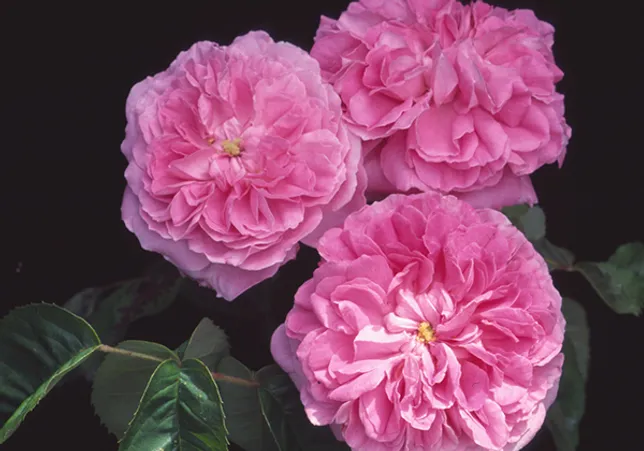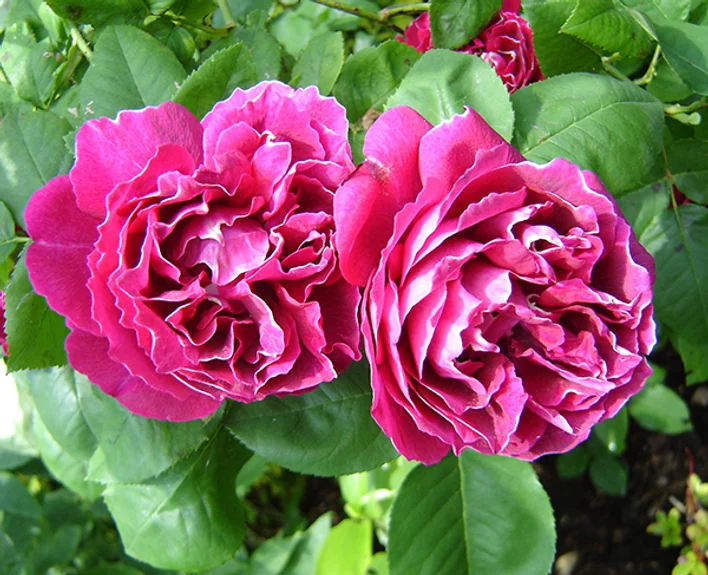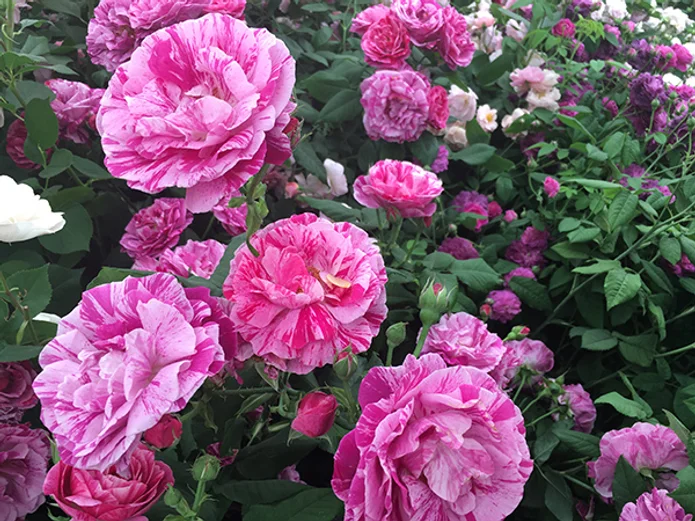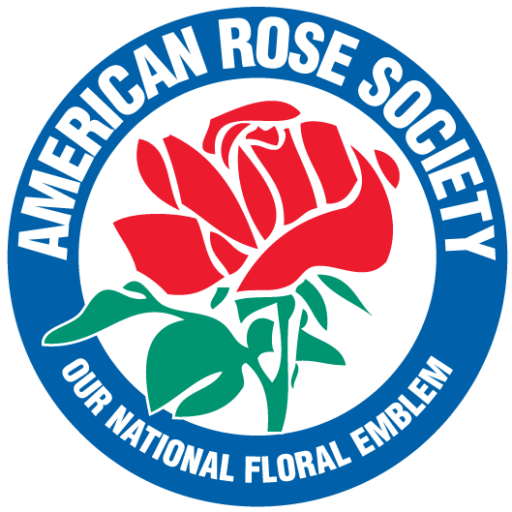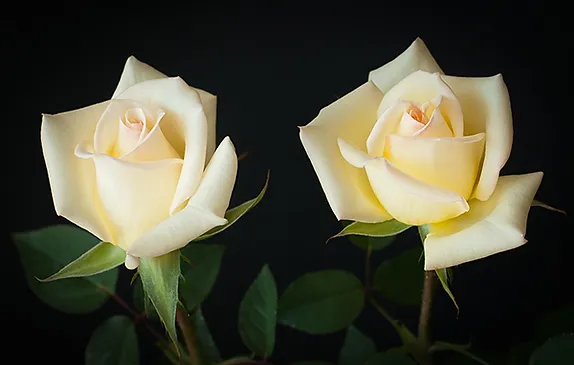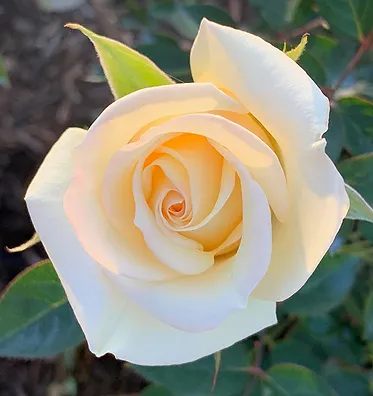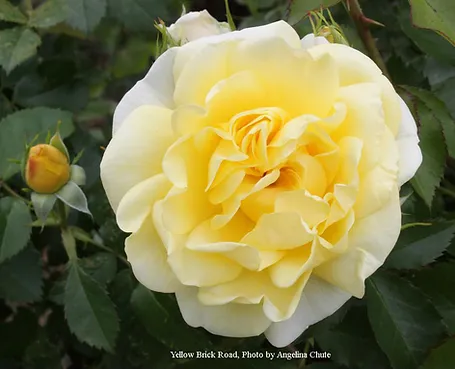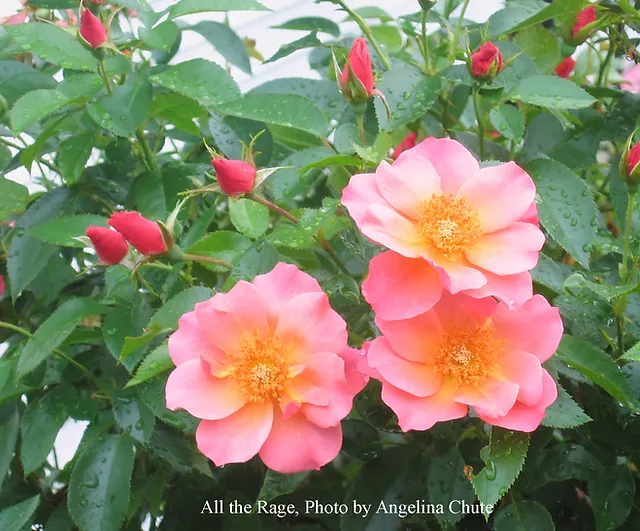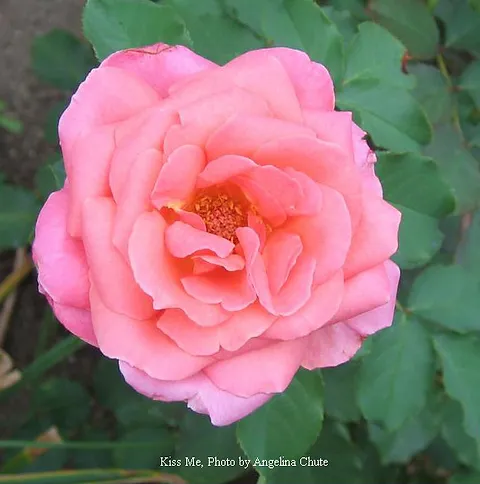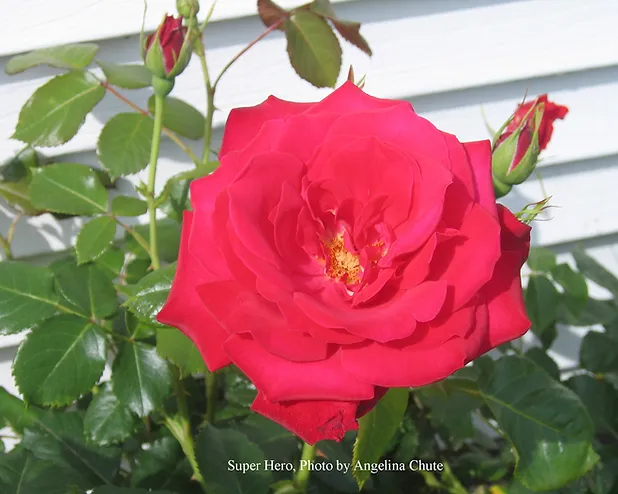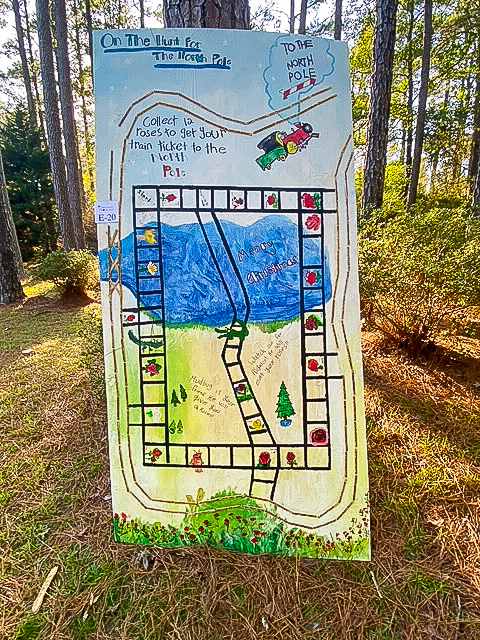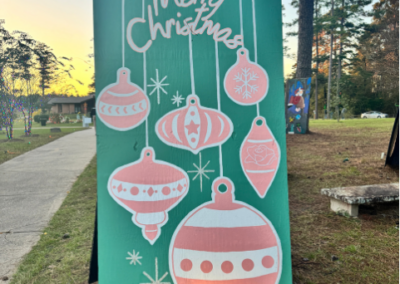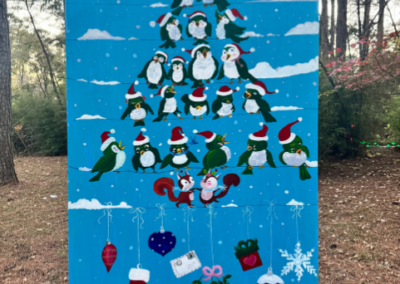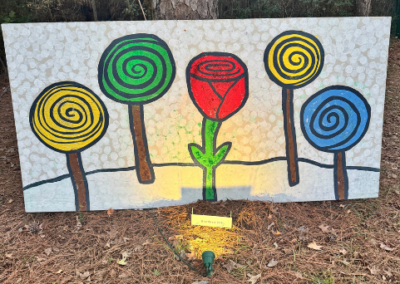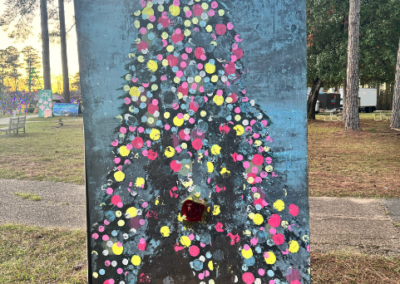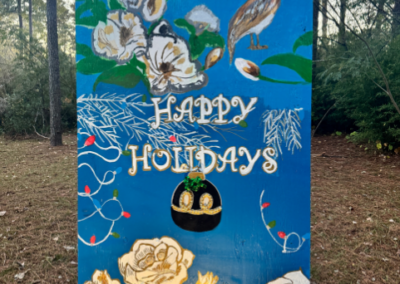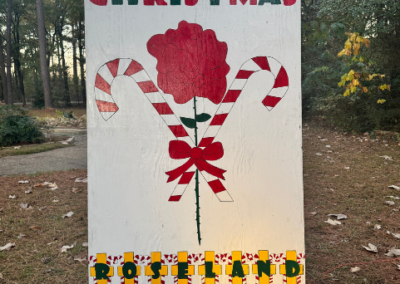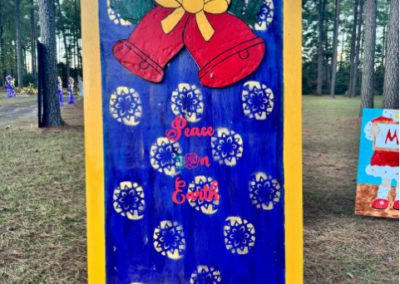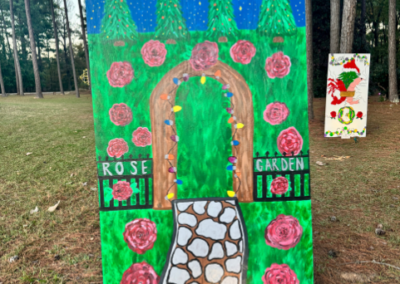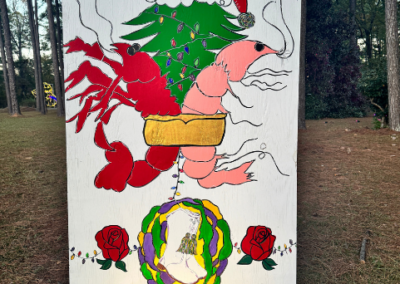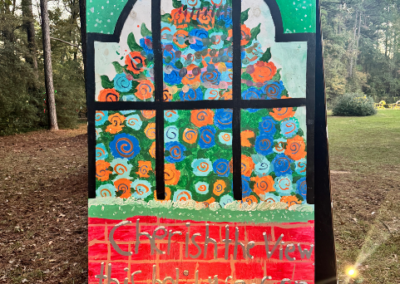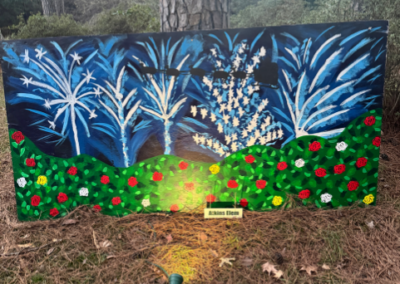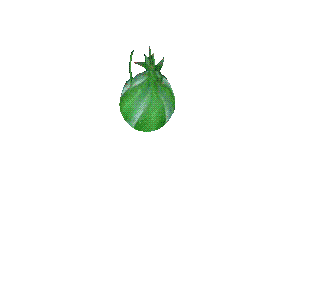Suzanne Horn, Master Rosarian, Pacific Rose Society
This is a 2018 Award of Merit article
‘Ring of Fire’ has literally burst into flames on the national scene for home gardeners and exhibitors alike. Created by local hybridizer Chris Greenwood of Glendora, California under the working title of ‘Apollo’s Fire’, it was introduced to the buying public in 2017 by Certified Roses. This stunning orange hybrid tea was one of the most eagerly anticipated releases to the market in years thanks to word of mouth from growers of test plants around the country. Since its release, ‘Ring of Fire’ has exploded on the retail market, having been distributed to top nurseries around the country and literally flying off the shelves. (ABOVE: ‘Ring of Fire’, photo by Kitty Belendez)
ABOVE: Left, ‘Ring of Fire’ – 2021 David Fuerstenberg Prize, photo by Dona Martin. Right, Ring of Fire-2021 David Furstenberg Prize.
This is not Chris Greenwood’s first introduction. The talented amateur hybridizer has produced a number of excellent roses and has had a goodly amount of success with the hybrid tea ‘Crowd Pleaser’ (introduced by Weeks Roses), floribunda ‘Tootsie’, miniflora ‘Hello Sunshine!’ and miniature ‘Hello Gorgeous!’, to name a few. However, nothing to date has come close to the phenomenal success of ‘Ring of Fire’. It has rapidly become the most popular new hybrid tea rose in the country and has drawn national recognition to its Southern California hybridizer. (ABOVE: Chris Greenwood with Jolene Adams receiving Rose Hills Award)
‘Ring of Fire’ was produced from what Chris Greenwood observes was “a happenstance cross” in May of 2007 between Marilyn Monroe and Hotel California. He notes that he had tried using Marilyn Monroe in his breeding program in the past but with no results. Marilyn Monroe presents very little pollen, and no seed had set. In 2007, he harvested numerous Marilyn Monroe flowers and obtained just a small amount of pollen. Since he had a couple of flowers of Hotel California ready to pollenate, he used what little Marilyn Monroe pollen he had on those two blooms. Fortunately, hips set and he was able to harvest about 20 seeds that fall. After placing them in the refrigerator, he planted those seeds in February of 2008. (ABOVE: ‘Ring of Fire’ bloom in bud vase, photo by Chris Greenwood)
I well remember the first bloom on this rose, which was really exciting. Chris cut the bloom and brought it to a rose society meeting in a mini bud vase. (See attached photo from that day and note the size of the vase on this first-year bloom.) He passed it around and elicited lots of “ooohs” and “ahhhhs” from the rosarians present. It was perfect – a glorious rich color with lots of substance and perfect, high centered hybrid tea form. It was a small glimpse into the greatness to come for this rose. (LEFT: ‘Ring of Fire’ – Best of Show photo with exhibitor Suzanne Horn from Santa Clarita Show, photo by Peter Alonso)
Chris notes that subsequent flowering on this rose was even better. With high hopes, he sent some budwood over to Weeks Roses. A small bump in the road occurred when his seedling plant died the following year due to a bad placement in the ground. But Chris really believed in his as yet unnamed orange hybrid tea, and you couldn’t keep a good rose down!
Other top hybridizers took a liking to the rose as well including the great Tom Carruth. In 2010 Tom budded more plants, and he and Christian Bedard continued to evaluate the rose. Another bump in the road occurred in about 2012 when Weeks decided it was not a variety they wanted to continue with. However, the silver lining was that Christian sent 10 plants to the Rose Hills Trials for Chris; and that was where it became a star! (ABOVE: ‘Ring of Fire’ – Cycle of Bloom shown by Suzanne Horn, photo by Dona Martin)
Chris recalls, “In April of 2014, I received a call from Christian to get over to Rose Hills, that my baby was in full bloom and very spectacular!” I remember going to see it on May 31, 2014, and it was still in full bloom. To say it was spectacular was an understatement. It was the most stunning display in all of Rose Hills. I found myself begging Chris for a test plant. (LEFT: ‘Ring of Fire’ bloom at Rose Hills, photo by Chris Greenwood)
As time progressed, Tom Carruth, who was now working with Certified Roses, recommended that they pick up the variety. Tom opined, “Ring of Fire is a jazzed-up version of Touch of Class. It has those same broad round petals that hold a perfect show form but with a brighter, clearer, orangier color. Even in hot weather, the flower size holds up. Its Grandfather is Saint Patrick so you can expect the flowers to last and last in the vase.”
Chris sent a boatload of budwood to Certified Roses, and it performed very well in Glendale, Arizona. This speaks very well for how well the rose performs in the heat. The rose was also sent to the Costa Farm Trials in Miami, where it showed absolutely no sign black spot, quite an achievement for a rose in Florida. Chris noted, “It appears that this variety is equally at home in hot climates as well as cooler ones. So far, I’ve not seen any fade in the color even with the extreme weather of hot then cool. Furthermore, I have not noted any disease whatsoever on any of my nine plants.” (ABOVE: ‘Ring of Fire’ – Vase of 12 shown by Suzanne Horn, photo by Dona Martin)
In October of 2014, ‘Ring of Fire’ (at the time dubbed “orange hybrid tea”) was awarded the gold medal for the Best Hybrid Tea in the Rose Hills Trials. This was a huge achievement for Chris as an amateur hybridizer, and the rose had now officially reached star status. See the attached photo of Chris receiving this award from then President of the American Rose Society, Jolene Adams. (LEFT: ‘Ring of Fire’ bloom, photo by Kitty Belendez)
As noted above, ‘Ring of Fire’ became commercially available across the country in 2017, and the response was remarkable. There are now large plantings of ‘Ring of Fire’ at Rose Hills, the Wrigley Garden and the Huntington Rose Garden. In addition, the rose is currently in the Portland Rose Trials. Tom Carruth conveyed to Chris that he anticipates this rose will be particularly stunning in the Portland trials and believes the flowers should be huge in the cool climate of Portland. As such, rose enthusiasts all over the country now have the opportunity to see and fall in love with this fabulous new rose.
I began growing this rose in 2015 as a test plant, which I grew in a large container in my Glendale, California garden. At the time I originally wrote this article, I was growing three plants, all of which were growing vigorously in these containers. Suffice it to say that I now grow many, many more. Glendale has a very hot climate, and ‘Ring of Fire’ thrives in it. The roses present a rich, non-fading orange hue with just a hint of yellow at the base. The blooms present a light fragrance, and just looking at them makes me think about fresh squeezed orange juice. They are produced almost exclusively as one bloom per stem and have a high percentage of great exhibition form. (They had me at “great exhibition form”.) Those blooms are presented on long straight stems and are cloaked in dark, rich, clean foliage, which create a complimentary frame for their dramatic color. I have not seen a speck of disease on any of my plants since I started growing them. In addition, the blooms present great substance, those legendary “petals of steel”, which were no doubt inherited from its parent plant, Marilyn Monroe. I have added to Chris Greenwood’s royalties as I continue to add more and more of these plants to my garden. (ABOVE: ‘Ring of Fire’ – Horizon Roses cover photo, rose photo by Chris Greenwood)
For the exhibitor, ‘Ring of Fire’ has everything you could possibly dream of in a show rose. It has great, classic form with lovely spiral centers that hold for days. The stunning electric orange color will surely grab a judge’s attention from across a crowded room. It is what exhibitors like to call a “Queen Machine”.
A wonderful rose for the garden as well as the show table, you will find ‘Ring of Fire’ to be one of the most striking and dramatic splashes of color in the yard. The bright, glowing orange hue is a real eye-catcher, and the beautiful blooms are nothing short of dazzling. The color remains fresh and vibrant through all stages, from bud to exhibition form to fully open bloom. As a cut flower, it is unbeatable and it has a long vase life as well. (ABOVE: ‘Ring of Fire’ bed at Rose Hills, photo by Chris Greenwood)
Needless to say, ‘Ring of Fire’ has a very rosy future. Everyone who sees it falls in love with it. You won’t want to miss out on adding this fabulous new star in the rose world to your own collection. Furthermore, rosarians everywhere are now looking forward to the great new introductions that are pending from the country’s newest star hybridizer, Chris Greenwood. (ABOVE: ‘Ring of Fire’ spray, photo by Chris Greenwood)
*** November 2020 Update ***
Since this article was originally written in 2018, the fame of ‘Ring of Fire’ has continued to grow. Chris Greenwood observes, “With every bloom cycle I get more and more impressed (proud papa). Whether it is on its own roots, Dr. Huey or Fortuniana, the results are still the same. Spectacular. Every bloom has stunning form and her performance on the show table is amazing.”
There have also been some new developments worth reporting. As of 2018, ‘Ring of Fire’ had already reached Number 5 on the list of Top Exhibition Hybrid Teas and Grandifloras on Roseshow.com. To date, it has logged 21 Queens of Show, 5 Kings, 13 Princesses, 14 Courts of Honor, 11 Challenge Classes, 2 Sprays and 1 Open Bloom. Furthermore, I have personally won three Cycle of Bloom awards with the rose, plus trophies for vases of 6, vases of 12 and Best of Show. I’m sure there are many more undocumented trophies for ‘Ring of Fire’ around the country that do not fall within the top recorded classes.
In addition, the most current issue of “Horizon Reports 2020” has recently come out, and ‘Ring of Fire’ is the cover rose. Furthermore, editor Bob Martin reports that ‘Ring of Fire’ received more reviews than any other rose – a record number of 85! Rave reviews came in from exhibitors all over the country. Space constrictions prevent me from sharing them all, but here are some of my favorite comments (edited for space).
Great rose overall! (Alonso); The red-orange blend of the blooms is stunning and they hold substance. Bloom, stem and foliage have all the characteristics of a champion exhibition rose for years to come. (Bechtle); What a beautiful exhibition rose! Attractive orange color with great form. Growth is much better this year with longer stems. Will continue to be on the trophy table for years to come! (Becker); This is the best orange hybrid tea I’ve grown in 33 years of growing roses, and one of the best exhibition hybrid teas we’ve ever grown. It produces perfect bloom form with very little grooming, fantastic fluorescent orange color, and long stems. Foliage is dark green, glossy and disease free. Insects seem to avoid it. The blooms hold form and color in the garden, but do not clam up in the floral fridge. It’s always the earliest and first hybrid tea to bloom in my garden, and it has a very fast bloom repeat. It has won us many local, district, and national trophies. (Belendez); Always a contender for Queen. Best show rose I grow. (Bever); A sure- fire beautiful shade of flaming orange and spectacular form. defines the phrase – Absolutely Awesome! (Blevens); A good bloom at the show will dazzle, I’m sure. (Borrmann); Cannot say enough good things about this rose. Beautiful form, beautiful color, long staying power in vase and on bush, nice leaves, a great show rose, always a Queen! (Brennan); Healthy bushes with good foliage are providing the blooms that we all know and love. Striking, deep orange with high centers. Honor Roll bound. (Dale); There aren’t enough superlatives. Color, form, this bloom has it all. (Eckley); The best hybrid tea in my garden, by far. (Ekuan); Blooms are spectacular vibrant orange. Excellent form with good centers and size. (Garman); Outstanding variety! Rich orange blooms have size, form and substance. (Garrett); A great rose to be sure. Forms, stems, disease resistance. It’s a keeper and will be Honor Roll quickly. (Guillebeau); Orange with outstanding exhibition form. Already a national queen. (Hering); One of the best roses in the last 40 years. Continual show quality blooms, disease resistant, statuesque and sublime color. (Huffer); Best hybrid tea of the decade. Wonderful color and form. (Lester); This has become my favorite – second to Gemini. Holds forever as a show exhibit and looks amazing in arrangements (Mahoney); An exceptional rose with vibrant orange blooms of great substance derived from its pollen parent, Marilyn Monroe. Like Marilyn, who starred in Some Like it Hot, the rose likes heat. Its seed parent, Hotel California contributes wide petals that enhance is near perfect hybrid tea form. The bush is a strong, upright grower and well productive of bloom on long straight stems. It has already proven to be one of the best hybrid teas ever. It is a must-have for exhibitors and it will be on the Honor Roll. (Martin); This is an outstanding rose and one of the best new roses in my rose garden in recent years. (Mayhew); This is an exceptional hybrid tea rose from Chris Greenwood. The orange blend color is truly beautiful, and the exhibition form is impeccable. This rose will not only win Queen, it will be on the Honor Roll. (Merriam); A winner for the garden and the trophy table. (Shockley); Color is beautiful and it is rare to get a bloom that is not PERFECT form! All stages of bloom are beautiful! Best rose for exhibition I have had in a long time! (Snellgrove); Obviously one of the best exhibition hybrid teas around. Great form and color, huge productive plant. (Streeper); One of the best roses to be introduced. It has everything I want in a hybrid tea. (Wilkinson).
As for me, I couldn’t be more pleased with this gorgeous hybrid tea, which has become my favorite. It seems to be almost everyone’s favorite now, with talk about it being the “rose of the century” frequently bandied about. The only downside to it is that everybody and their brother is growing it, and you will see up to a dozen blue-ribbon quality entries for Queen at the Southern California rose shows. It is certainly winning more than its share of trophies and I look forward to seeing it on the Honor Roll soon.
Lastly, perhaps the most significant development for this remarkable rose occurred this year when its hybridizer, Chris Greenwood, was awarded the American Rose Society’s 2021 David Fuerstenberg Prize! Established in 1929, this accolade is awarded from time to time to the originator of any new rose of American origin suitable to the American climate which may deserve honor. I couldn’t think of a more deserving hybridizer to receive this grand award.
Chris Greenwood continues with his backyard hybridizing program and has produced a number of new roses including a highly regarded floribunda named ‘Shannon Lanaya’ that we will be seeing more of on the trophy tables soon. In the interim, hearty congratulations to him on his David Fuerstenberg Prize and the incredible success of his outstanding creation, ‘Ring of Fire’.
